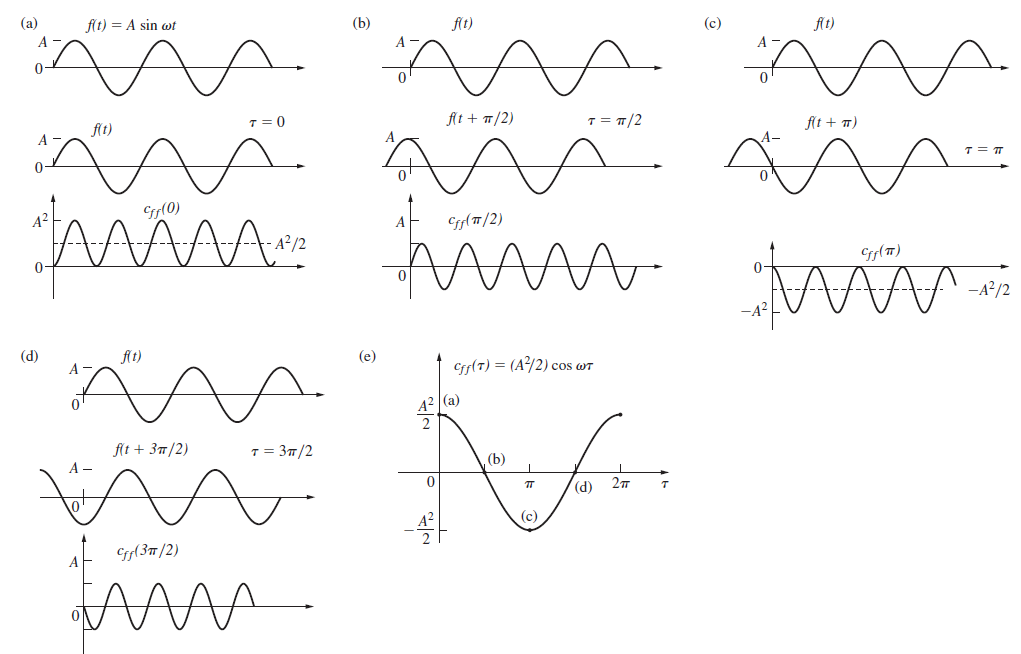Question: With the previous problem in mind, return to the autocorrelation of a sine function, shown in Fig. 11.51. Now suppose we have a signal composed
Fig. 11.51

(a) (b) flt) (c) fit) f(t) = A sin wt A 0- A- fAt + 7/2) T = T/2 flt + T) flt) A - Cry(0) Crf(T/2) Cry(T) -A/2 (d) flt) (e) Crf(T) = (A/2) cos wT 42 |(a) fit + 37/2) %3D /2 (b) (d) (c) A Crp(37/2)
Step by Step Solution
3.54 Rating (164 Votes )
There are 3 Steps involved in it
Each sine function in the signal produces a cosinusoidal autoc... View full answer

Get step-by-step solutions from verified subject matter experts


